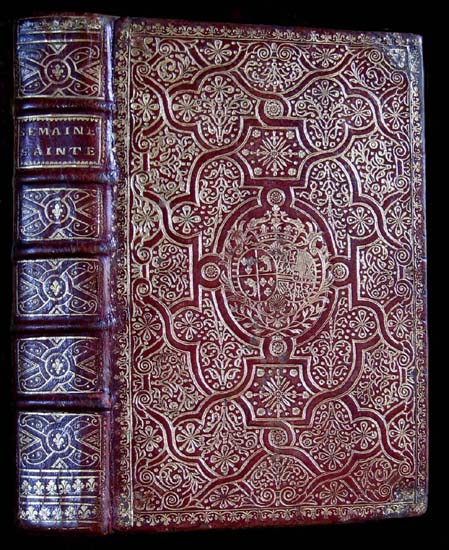

| On the previous page I presented 5 plaque bindings, 4 out of the 5 were Collombat editions of the OFFICE DE LA SEMAINE SAINTE. Therefore, I will refer to that plaque simply as the "Collombat model". On this page I am going to present 4 more plaque bindings. In as much as these bindings were designed to emulate the work of Padeloup, I will refer to them as the Padeloup model. This is not to say that they are the work of Padeloup. For the moment, I have no proof that Padeloup made or designed the plaques. |
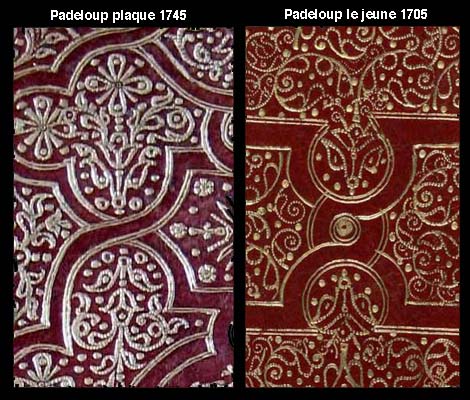
| While there is a distinct a clear relationship between the artificial pointillé designs of this plaque binding compared with actual examples of Padeloup's pointillé work. There are also many Caumartin inspired items, the spine compartments and strapwork arrangements leave no doubt of a strong Caumartin influence. |
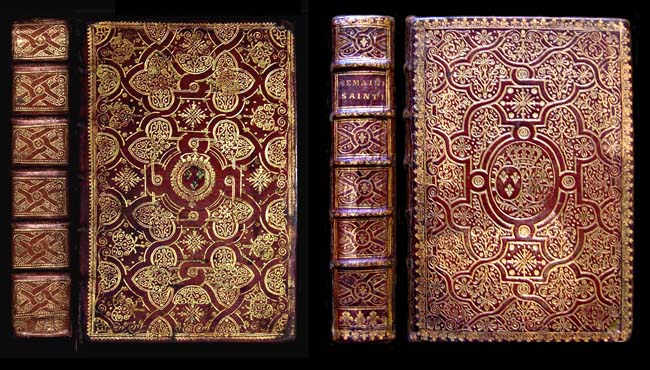
| In Comparative Diagram 2, I have reproduced these bindings at the same scale, click on the link to see these examples enlarged. The binding on the left is a atelier des Caumartin example c1715, and probably one of the last produced by this workshop. While the plaque binding on the right may have been made decades later, it bears the arms of Marie Leczinska (Leszczyska), wife of Louis XV. This coat of arms must be post 1725, the year of the union of this couple, and may in fact be much later. Three of the four Padeloup plaque bindings to be shown on this page bear the Arms of Marie Leczinska. All four bindings are examples of the OFFICE DE LA SEMAINE SAINTE three are editions from Chez la Veuve Mazieres, & Jean-Baptiste Garnier. two of these are 1745 editions. Thus I think there is a strong possibility that these plaque bindings as well as the Collombat examples date from this period (c 1743-45). |
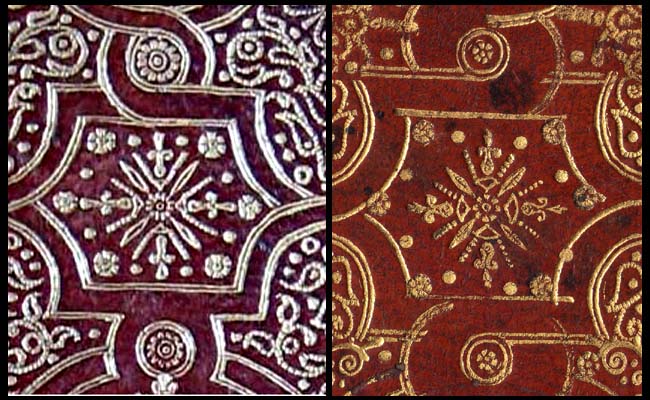
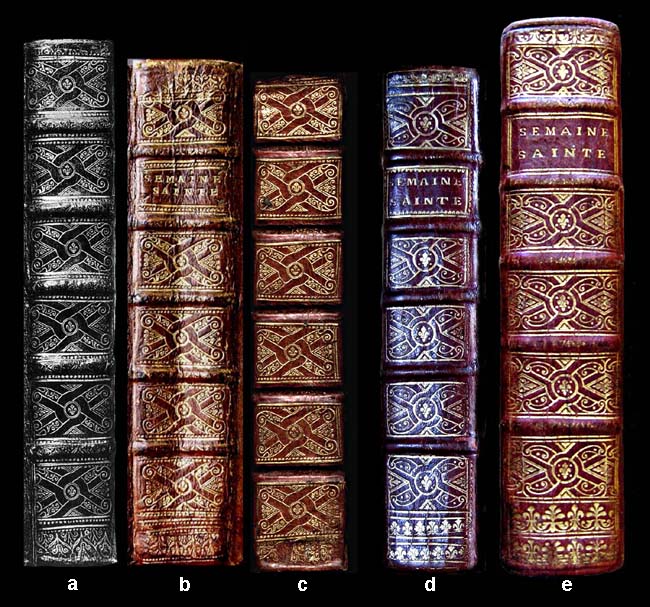
| Probably the most important observation that we can make concerning these 'plaque' bindings other than the fact that the spine compartments copy very closely the late Caumartin model, is that the Padeloup and Collombat spine panels are identical. Each spine compartment has probably been made by a single small plaque instead of individual tools. Therefore it would seem very likely, indeed quite certain that both of these plaque models were made by the same inventor and that the bindings probably derive from a single workshop. There seems little doubt that this workshop had strong connections to the Royal family. All of which points strongly to Pierre-Paul Dubuisson (fl 1746-1762). |
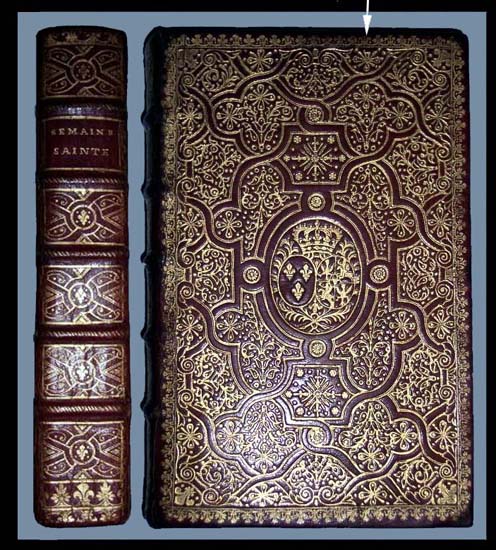
| The example shown above, was sold on ebay last year, fortunately, if nothing else, I saved the photos of it. This binding is found on a 1728 edition of the OFFICE DE LA SEMAINE SAINTE, Paris: Chez la Veuve Mazieres, & Jean-Baptiste Garnier. If you look at the enlargement, you will notice that where I have placed an arrow, there is a small defect. The artificial fleuron does not match its counterpart on the left. Below is an enlarged detail from the 1745 binding at the top of this page, here again we see this same defect. |
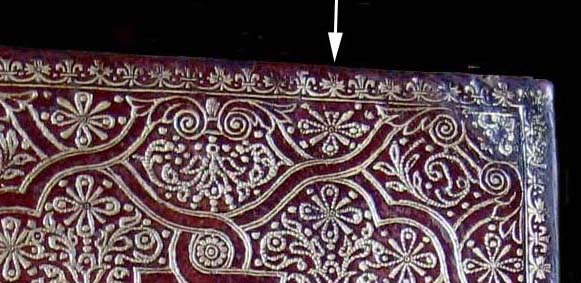
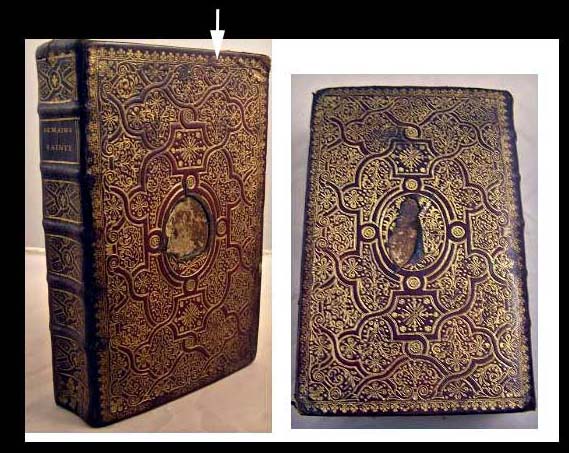
| In the photo shown above we can see (just barely) the another example of this flaw in the plaque. I was lucky enough to be able to buy this copy (a lot cheaper due to the defaced armes) and when it arrives I will be able to provide some better quality images! This important detail is just one more proof that this is not a hand tooled binding. Below we see an identical plaque detail extracted from different bindings. |
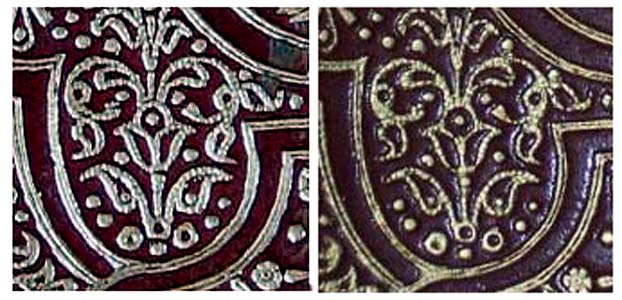
| (2009 update - I have recently discovered other, possibly later (1752?) plaques of this type. Although nearly identical we do not see in these examples (shown below) the same flaw as shown above.) |
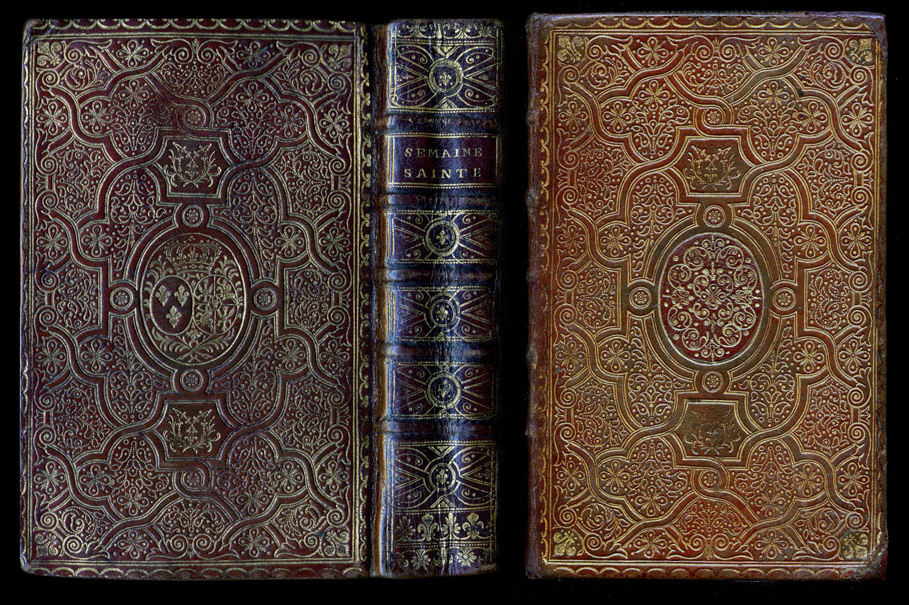
| information about the author | visit the NEW (2019) VIRTUAL BOOKBINDINGS |